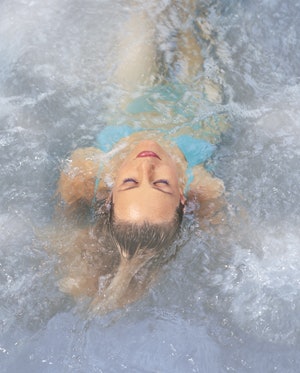
For the professional spa retailer, one mantra has prevailed over the past few years: To survive, you must adapt. One retailer who understands is Shawn Maynard, co-owner of Bullfrog Spas in Ogden and Layton, Utah.
“When the economy slowed down, it created more consumers that were more frugal. They would hold onto their money and had a harder time spending their disposable income on what they deemed as frivolous,” Maynard says.
As we previously reported, the previous era of hot tub sales was driven to a large extent by the social qualities a hot tub provided: time with friends and family, fun and parties. But with tightened wallets, that mindset changed.
“That’s not enough to justify spending your hard-earned dollars,” Maynard says.
That meant Maynard had to change the way they sold their units — instead of being a “want,” the hot tub had to become a “need.” Hot tubs needed justification, and to do that, Maynard focused his selling strategies on the health and wellness benefits his spas offer.
“I think most of our consumers now need the additional reassurance that it’s not a frivolous thing, that it’s not just for social, that they’re going to get real, legitimate health benefits from it,” Maynard says. “We’ve always kind of said that, but as it became more top of mind for customers, we’ve really emphasized that more.”
More than half of Maynard’s hot tub sales are to customers who intend to use it for health and wellness purposes. Here’s how he does it.
Get Personal
When discussing the health and wellness benefits hot tubs provide, Maynard finds a personal connection to his potential customers is the most effective strategy. To start, he says, ask your customers what they do for a living and what recreational activities they enjoy. Consider the physical aspects of those activities — like lengthy periods of standing, frequent bending over, lifting, etc. — and how they can cause strain.
“You try to find a common ground with them so you can say, ‘Oh yeah? Me too,’” he says.
From there, Maynard discusses how his own hot tub has improved his overall well-being, and helps customers build a mental image of what their spa experience could be and how a hot tub could improve their health and quality of life.
“I share that at the end of a 12-hour home show, there’s nothing like going to sit in a hot tub to work out the kinks and the strains before I go to bed, and then I sleep so much better,” he says. “And then almost every time, you get the people who have a job or recreation that leaves them sore at the end of the night. They nod and go, ‘Gosh, yeah, that would be great.’ And they start to imagine themselves experiencing that kind of relief.”
Make Connections
Another piece of sage marketing advice you hear everywhere: You need to network. To that, add this caveat: Network with health and wellness professionals who can support your message. Rather accidentally, Maynard discovered one of his most fruitful connections in a chiropractor he met at a home show.
“He was talking to me about how they have a hot tub in their practice and they loved it. They recommend their customers use them and have them,” Maynard says.
After that conversation, Maynard sold a hot tub to that chiropractor who in turn referred his patients to Maynard. This prompted Maynard to forge more relationships with chiropractors, and the referrals continue to flow.
“They will send their customers here with a prescription saying, ‘You need continued therapy — or a hot tub.’ And for those people, a hot tub is cheaper than their alternative therapy,” Maynard says.
A Different Customer Paradigm
The pre-recession spa buyer and the new spa buyer are completely different, Maynard says.
“No longer do they just wander in and go, ‘Oh, this is nice and shiny and sparkly. We’ll take it.’ They do research, they’ve been online and know about all the different types of spas and features and efficiencies. They’re super educated, not like before,” Maynard says. With this in mind, it’s imperative that you and your sales staff stay up-to-date on the latest in the industry, in particular, the innovations that will help your customers justify a hot tub purchase.
Since the economic downturn, Maynard’s business has remained steady, within five and 10 percent up or down since 2007. This year, business is noticeably up. He credits this change to one thing:
“The harder it got, the more we tried,” he says.
In other words, they evolved. Maynard boosted marketing efforts and shifted his sales strategy to focus more on health and wellness, and while the increase has been modest, Maynard sees it as a success.
“I think the last three years, if you’re level, it’s the same as being up 300 percent, right?” Maynard says. “I think the health and wellness angle helped the business plenty. I think it’s a requirement that that be part of your sales presentation.”
Comments or thoughts on this article? Please e-mail [email protected].








































